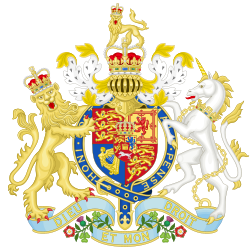| Act of Parliament | |
 | |
| Long title | An Act for the Abolition of Slavery throughout the British Colonies; for promoting the Industry of the manumitted Slaves; and for compensating the Persons hitherto entitled to the Services of such Slaves |
|---|---|
| Citation | 3 & 4 Will. 4. c. 73 |
| Introduced by | Prime Minister Charles Grey, 2nd Earl Grey (Commons) |
| Territorial extent | United Kingdom |
| Dates | |
| Royal assent | 28 August 1833 |
| Commencement | 1 August 1834 [a] |
| Repealed | 19 November 1998 |
| Other legislation | |
| Amended by | |
| Repealed by | Statute Law (Repeals) Act 1998 |
| Relates to | |
Status: Repealed | |
| Text of statute as originally enacted | |
| Revised text of statute as amended | |
The Slavery Abolition Act 1833 (3 & 4 Will. 4. c. 73) was an act of the Parliament of the United Kingdom which abolished slavery in the British Empire by way of compensated emancipation. [1] The act was legislated by Whig Prime Minister Charles Grey, 2nd Earl Grey's reforming administration, and it was enacted by ordering the British government to purchase the freedom of all slaves in the British Empire, and by outlawing the further practice of slavery in the British Empire. [2] The Act explictly delineated 19 separate pots of compensation covering the Caribbean, South Africa, and Mauritius. Although Britain, Canada, Australia, and New Zealand were technically included, these had relatively few slaves at this time for other reasons. India was excluded. Around 800,000 freed slaves were attested in the claims process.[ citation needed ]
Contents
- Background
- Campaigns
- The act
- Payments to slave owners
- Repeal
- In popular culture
- See also
- Notes
- References
- Further reading
- External links
While the 1833 Act was a landmark, it did not end slavery throughout the entire British sphere of influence. [3] [4] [5] [6] The Act explicitly excluded territories like British India, where slavery was addressed separately by the Indian Slavery Act, 1843. In regions colonized later, such as Nigeria, the abolition of pre-existing local systems of slavery was a gradual process that extended into the early 20th century. Furthermore, in British protectorates, which retained their own local laws, the institution persisted for much longer. For example, slavery in Bahrain was not legally abolished until 1937.
The Act was technically repealed in 1998 as part of a restructuring of the entirety of English statute law, though slavery remains abolished. [7]
